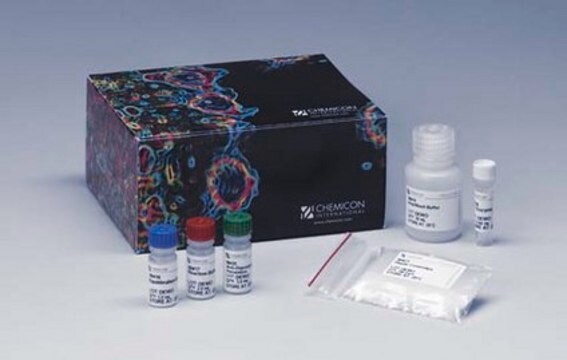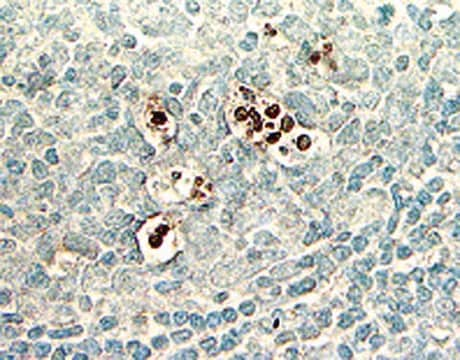QIA33
FragEL DNA Fragmentation Detection Kit, Colorimetric - TdT Enzyme
Synonim(y):
TUNEL Assay
About This Item
Polecane produkty
zastosowanie
sufficient for 50 tests
Poziom jakości
reaktywność gatunkowa (przewidywana na podstawie homologii)
all
producent / nazwa handlowa
Calbiochem®
warunki przechowywania
OK to freeze
metody
microbe id | specific enzyme detection: suitable
moc wejściowa
sample type paraffin section(s)
sample type frozen section(s)
sample type fixed-cell preparation(s)
metoda wykrywania
colorimetric
temp. przechowywania
−20°C
Opis ogólny
Komponenty
Ostrzeżenie
Zasada
Uwaga dotycząca przygotowania
Przechowywanie i stabilność
Inne uwagi
Gu, Y., et al. 1994. Endocrinology135, 1272.
Gavrieli, Y., et al. 1992. J. Cell Biol.119, 493.
Fawthrop, D. J., et al. 1991. Arch. Toxicol.65, 437.
Martin, S.J., et al. 1990. J. Immunology145, 1859.
Wyllie, A. H. 1980. Nature284, 555.
Kerr, J. F. R., et al. 1972. Br. J. Cancer26, 239.
Informacje prawne
Hasło ostrzegawcze
Danger
Zwroty wskazujące rodzaj zagrożenia
Zwroty wskazujące środki ostrożności
Klasyfikacja zagrożeń
Acute Tox. 4 Inhalation - Acute Tox. 4 Oral - Aquatic Chronic 2 - Carc. 1B - Eye Dam. 1 - Muta. 2 - Ox. Liq. 3 - Skin Irrit. 2 - Skin Sens. 1 - STOT RE 2 Inhalation
Organy docelowe
Respiratory Tract
Kod klasy składowania
5.1B - Oxidizing hazardous materials
Certyfikaty analizy (CoA)
Poszukaj Certyfikaty analizy (CoA), wpisując numer partii/serii produktów. Numery serii i partii można znaleźć na etykiecie produktu po słowach „seria” lub „partia”.
Masz już ten produkt?
Dokumenty związane z niedawno zakupionymi produktami zostały zamieszczone w Bibliotece dokumentów.
Nasz zespół naukowców ma doświadczenie we wszystkich obszarach badań, w tym w naukach przyrodniczych, materiałoznawstwie, syntezie chemicznej, chromatografii, analityce i wielu innych dziedzinach.
Skontaktuj się z zespołem ds. pomocy technicznej













